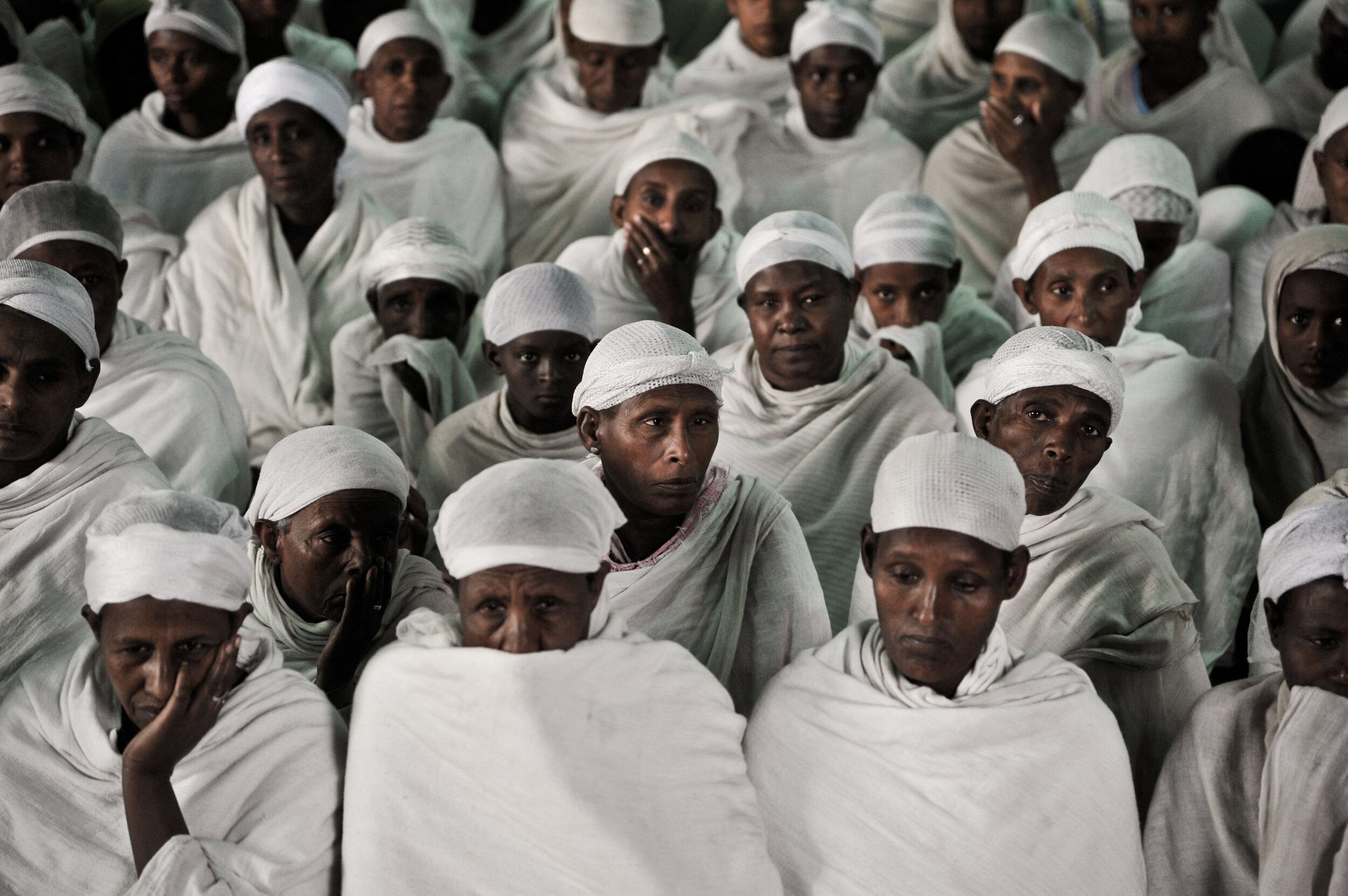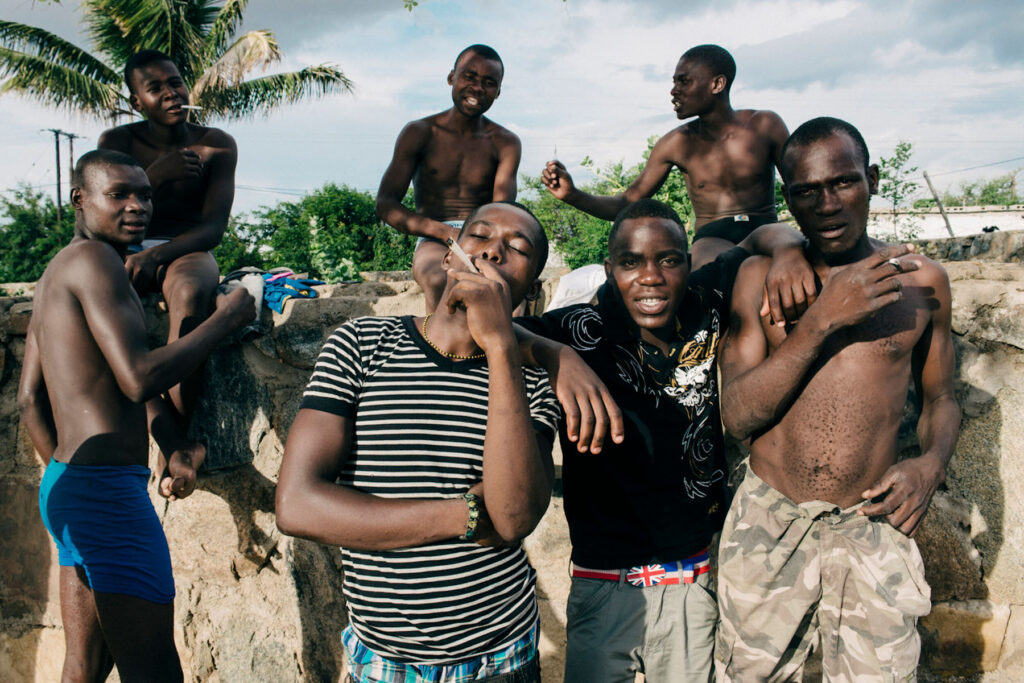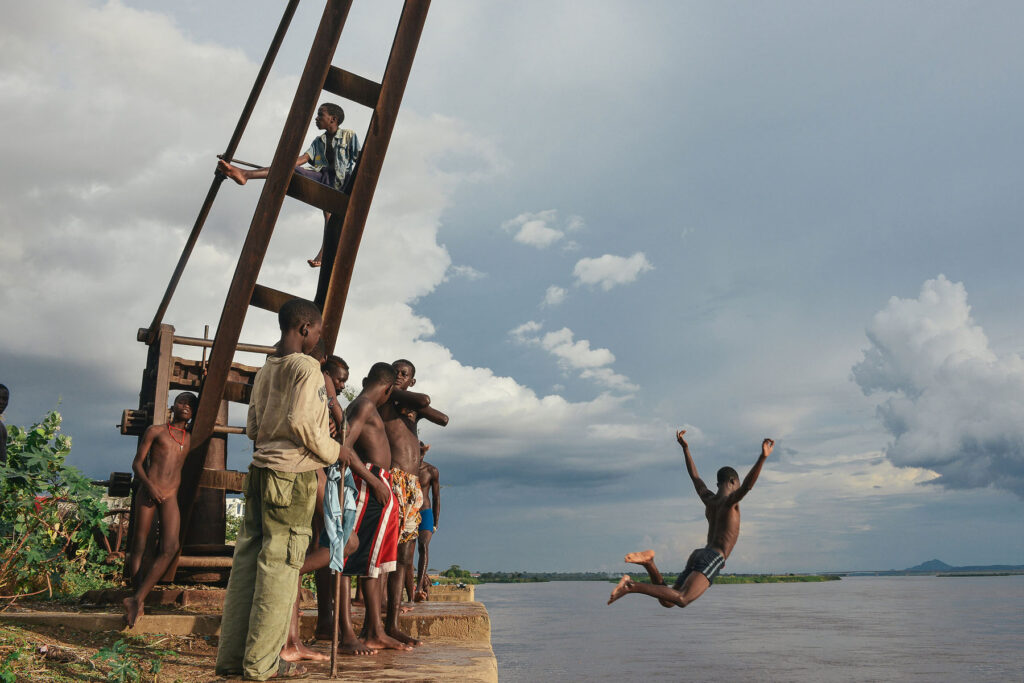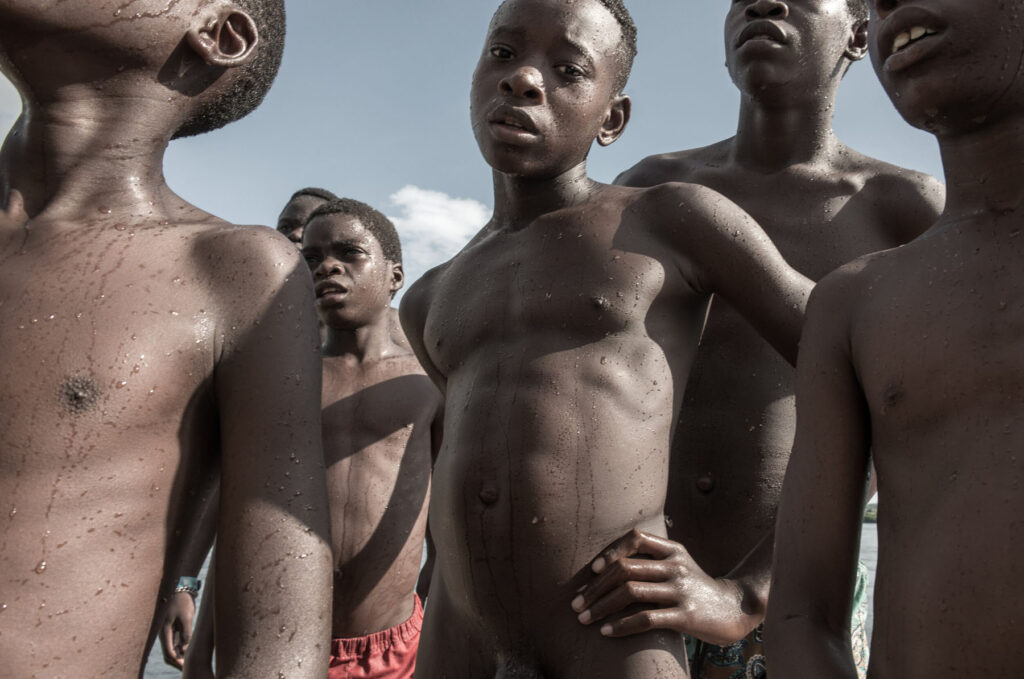Benjamin Hoffman

“The best camera in the world is the camera you carry with you”
In many of Benjamin Hoffman’s photographs, groups seem to congregate, often taking part in what seems like leisurely activities, or captured in moments of pause and relaxation. There is usually, if not one, but multiple pairs of eyes meeting the camera’s gaze; an acknowledgement of the French photographer’s presence. For Hoffman, his photographs tell the story of groups of people and communities that may otherwise go unnoticed and unseen, even in a global world. When his series following the gypsy community in France over a period of three and half years was published in the book Testament Manouche in 2016, an outpouring of people contacted Hoffman; they were able to get to know a community that hadn’t registered on their radar. That is Hoffman’s ambition; ‘I just want to tell stories, that’s what matter to me. I want people to learn something, and if it touches someone else, that’s my aim’, he explains.
With a background in journalism, Hoffman knows how to capture and translate the stories of those he encounters through a photograph – the rich colours in his images reinforce the ‘reality’ that he seeks to leave unchanged as he finds it. But Hoffman is no purist; he often uses his iPhone, and, the series Farewell Cape Town, shot in black and white unlike many of his other projects, was captured using the Hipstamatic App to achieve the desired effect. His images strive to tell important stories about communities in moments of flux, like the fishing village on the verge of disappearance in The Bay, or the last remaining Jews in Ethiopia still waiting, after decades, to reach the Promised Land in Beta Israel, but there is undoubtedly an element of Hoffman himself in his work. Whilst Farewell Cape Town captures the photographer’s experience of moving, and falling in love with, the complex history and beauty of South Africa, his approach of building up relationships with those who his lens falls upon contributes to the sense of simple humanity that transcend the subject matter.


Your series Farewell Cape Town was shot on an iPhone – how do you frame images through that technology?
I’ve had many friends come and ask me what camera they should buy, and I always reply that the best camera in the world is the camera you carry with you. And well, nowadays, everyone has smartphones and iPhones. I think these make great cameras because you have them with you all the time. It’s like some kind of a visual notebook. I often carry a proper camera with me as well, but with the iPhone, you’re way more discreet. Most of the time, people don’t realise that I am shooting, and they are way less afraid [of the iPhone] than a real camera. I think people are so used to mobile phones as cameras because they’re comfortable with them; they take pictures of themselves and their friends with them. So when someone with an aim, like me, is taking pictures with a mobile phone, many barriers come down; I think it’s a truly interesting tool. I really like the era we are living in in the 21st century, and for photography it is something really amazing. I think I take maybe 50 to 100 photos a day: I always shoot with my mobile phone and I am totally obsessed with it. Sometimes I spend hours just looking at the photos from the last year or months. My phone is like an extension of my hand. I use this tool (the smartphone) to keep a visual diary, for observations. It kind of replaces a notebook for me.
It’s interesting that people are more willing to be photographed by an iPhone than a camera.
For sure, I think in many, many parts of the world people are used to it, it’s become part of their lives. Everyone now, even in remote places of the world, knows smartphones. They use them, they’re not afraid of them anymore. There’s a real difference. It is important to me that the smartphones are now part of the daily life of most of the people on the planet. The uses have changed and it is interesting for photographers to dive into this and find our place.
What informs your choice of subject and the people you photograph?
I was trained as a journalist – I was a TV journalist working in documentaries for a long time, and then I kind of switched to photography. I think as a documentarist so usually I have a subject in mind and a story to tell. The story comes before the pictures; usually, I have the questions but I don’t have the answers, and the answers come in the process of taking the pictures. But the people I shoot, they’re usually connected to the story I want to tell, or the questions I’m asking myself. I don’t shoot people just because of the way they move or act, but because it tells a story. Most of the subjects I choose echo to inner questioning that I have. They are always around the same concerns, which are the identity quest, the will of preserving a story and a past. All the pictures are like small dots connected to each other, and together it tells the story.
Would you be able to speak about one of your upcoming projects, The Bay?
That’s coming soon, and it’ll be published as a book too. I’ve always been fascinated by the connection between people and the sea. When I was in Cape Town, I met a small community living in a small village called Kalk Bay – it’s made up of a really old fishing community dating back to the 17th – 18th centuries. They still sh in the same way they used to sh 200 years ago, but the community is totally disappearing right now because of things like globalisation, pollution, warming waters. I went into the community and gained their con dence, eventually going out to sea with them. That was something really amazing. What I found really interesting is that a few hundred people in that small community, the small story, weaves into the bigger story – of apartheid, of South Africa’s history.

It’s quite interesting the way you talk about the relationship between people and nature because, in a lot of your images, there are crowds or groups of people who seem to make up the landscape: What informs the composition of your work, and that relationship between people and nature?
I mean it’s interesting because, apart from commission work, in my personal work I don’t usually shoot many portraits. I usually like to shoot people in groups because I like the interactions between people and, as you said, usually the landscapes are modified by humans. I like the combination because the eye of the viewer can work from the landscape to the people, and so I like to integrate landscape into the picture. I rarely shoot landscapes without people.
As a photographer where do you find your inspiration for the scenes that you capture?
I think there are hundreds of answers, and I think it’s really classic what I’m going to say but, inspiration is everywhere. Living in 2020 is something amazing because you have access to so many things. And, I have Instagram as well so, of course, I can scroll through a lot of images… So I find my inspiration everywhere, but the ideas of what I want to work on are usually formed by wandering the streets of the place I’m in. Like, with The Bay, I wandered there, met the fishermen and, step by step, I dug into the story. With a lot of the topics I work on, they come from discussions I have with people, or news I find on the radio or in the newspapers; I’m attracted to something and then start digging and exploring, and I find a story to tell.
You mentioned earlier that you take hundreds of pictures a day; which ones make the cut and why?
Well, it’s a good question – there are two things. There are the images I take mechanically I would say; photos that I take when there’s a light that I like, when there’s a shape that I like, when I want to take a portrait of someone that interests me. And I barely use those pictures. Sometimes, I post one online because I want to remember the moment, and I use my Instagram as a visual notebook. When I’m working on a project I work the same way, taking a lot of pictures but, when I take a picture I instantly know if I’m going to keep it or not. I don’t know if there’s a word for it in English, but, for me, it’s about what’s going on outside the frame. That’s really important to me: all the emotions, the feelings that happened when I took the pictures. I mean, sometimes a photo isn’t good and I can’t use it because it’s blurry or whatever, but I keep it because it will be connected to the other pictures, and the rest of the story.
You mention you see yourself as kind of a documentarian, but do you see your photography as art or as journalism?
That’s a tricky question. I’d like to say both, but I don’t think I’m the right person to decide. I mean, I’ve had a few exhibitions in galleries, sometimes I sell prints, and I know people have hung my prints in their home and I’m really happy and honoured about that. Maybe it’s both. If my work is art in someone’s mind, I’ll accept that but I do not define myself as an artist at all. And I do not see myself as a journalist anymore. I just want to tell stories, and I’m always trying to find a way of telling the truth – but I don’t have that obligation to be objective anymore. Because I see myself as a documentarist, I’m able to have my own point of view. I’m able to tell the stories in the way I want to because I felt a certain way, or because it’s important to me. I think having a point of view and being able to express that makes the difference.
Credits
Photography BENJAMIN HOFFMAN
www.benjaminhoffman.fr
www.instagram.com/benjaminhoffman